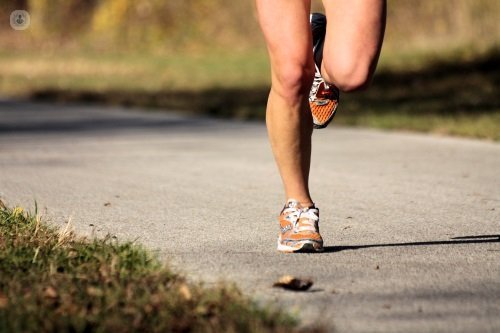3 Key points about chondromalacia
Written by:When we refer to the term chondromalacia, we are literally talking about a "softening of cartilage". This alteration localized (focal) articular cartilage is usually classified into four grades ranging from the softening of the cartilage (the lighter) the loss thereof leaving bare the bone (the most severe), passing through intermediate stages of cracking of same (shallow or deep).
Do not forget that the articular cartilage surfaces need to allow them slip. This cartilage is especially thick in the kneecap, you because when we got up and sat forces transmitted through the kneecap can be up to eight times the body weight and being even more important in activities such as running or jumping.

Symptoms of chondromalacia
Usually the term "chondromalacia" is used as a catchall to explain the symptoms in the knee. Therefore, specialists in sports medicine prefer to speak of patellofemoral pain to refer to what is often called "chondromalacia".
Sometimes the symptoms can be very different, confused and different intensity, although we often refer patients are:
- Pain: difficult to locate and progressive.
- Feeling failure of the knee, referred to the expression "I will knee".
- Noises or crunches sometimes expressed that arise when the cartilage wears away and becomes irregular.
- Small spills of joint fluid that sometimes appear and are the answer to cartilage degradation.
Causes of chondromalacia
Unfortunately patellofemoral pain, which occurs in the anterior region of the knee, brings together many diseases such as patellofemoral dysplasia syndrome hyperpressure or external patellar patellar instability.
Often different reasons to explain this type of pain are invoked: valgus knees, ie, turned inward; sport intermittently, overweight, sedentary lifestyle or lack of extensor muscles, among others.
Unfortunately are not uncommon findings small changes in diagnostic tests, detected especially in resonances, which open the door to not always coherent explanations about pain.
However, it is obvious the existence of small alterations of the extensor apparatus that require a good exploration and reasonable use of additional tests.
Treatment of chondromalacia
Make an accurate diagnosis is essential to apply a good treatment. Assuming that the cartilage has no nerves and in the absence of injury to the subchondral bone or major cartilage degradation or synovitis, which they can pain generate pain noteworthy attribute a significant part of that pain to soft structures knee, hence the importance of exploration.
Given this reasoning we find that often and oral anti - inflammatory painkillers, do not always get improvements.
From my point of view, to apply the best method it must be customized. In this regard, the physical therapy is very important in order to route it to acquire a muscular balance between the various muscle groups and a suitable tone. These methods are best protect the joint. Logically correct any biomechanical alteration of the lower extremities is a priority.



